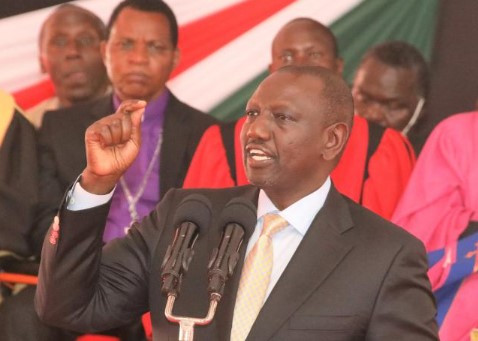- Details
- East Africa
- 1008
President William Ruto at Kabarnet ASK showground. [Kipsang Joseph, Standard]
President William Ruto has dismissed any plot to amend the Constitution to extend his term limit.
Ruto warned the Kenya kwanza legislators from diverging their attention from service delivery.
Speaking during the Kenya Kwanza Parliamentary Group Meeting at Statehouse, Nairobi, Ruto said he was not interested in extending his term, asking lawmakers allied to him to instead focus on amending laws that will benefit Kenyans.
“Do not spend your time pushing for selfish and self-serving legislation, like changing the Constitution to remove term limits. My focus is service to the people,” Ruto told the MPs.
There was an uproar and concern a week ago after FAFI MP Salah Yakub’s proposal of abolishing the presidential term limit to add more years to the Head of State.
Yakub had initially said UDA lawmakers were working on a Constitutional Amendment Bill to replace the two-term limit with an age limit of 75 years, paving way for Ruto to rule for up to 20 years.
A proposal that was strongly denied and objected to by the Kenya Kwanza brigade who said Yakub’s sentiments were his own personal view and not the coalition’s.
“The member of FAFI is merely an attention seeker…he has multiple problems he is supposed to be dealing with, issues of hunger among others. That is not the position of the party, and I speak with authority, there is no such thinking that we need to change the Constitution to remove the term limit” said Majority Whip Silvanus Osoro.
According to Article 142 of the 2010 Constitution, the president shall hold office for a term beginning on the date of the inauguration and ending when the person elected next President is sworn in.
In case the article is to be amended, it will go beyond a parliamentary initiative as a referendum will be required to effect the change. By Grace Ng'ang'a, The Standard





